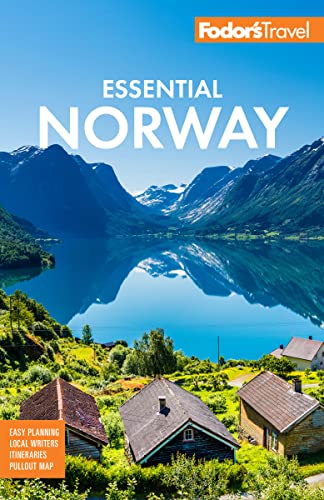Car
You can drive in Norway with your valid U.S. driver's license. Excellent, well-marked roads make driving a great way to explore Norway, but it can be an expensive choice. Ferry costs can be steep, and you should turn up early in peak season for the most popular crossings. Tolls on some major roads and to enter the larger cities add to the expense, as do the high fees for city parking. Tickets for illegal parking are painfully costly.
Eighteen roads around the country are designated as national tourist routes, so designated for picturesque scenery and tourist-friendly infrastructure, including parts of Route 7 across the Hardangervidda plateau, the Geiranger-Trollstigen road and the Atlantic Ocean Road. If you're planning to drive around Norway, call or check the website of the Statens Vegvesen (Norwegian Public Roads Administration), which monitors and provides information about roads, conditions, tolls, distances, and ferry timetables. Phones are open 24 hours a day.
Four-lane highways are found only around major cities. Elsewhere, roads tend to be narrow and twisting, with only token guardrails. The southern part of Norway is compact—all major cities are about a day's drive from each other. Along the west coast, waits for ferries and passage through tunnels can be significant. Don't expect to cover more than 240 km (150 miles) in a day, especially in fjord country.
In a few remote areas, especially in northern Norway, road conditions can be unpredictable in autumn, winter, or spring. Some high mountain roads are closed as early as October due to snow, and do not open again until June. When driving in remote areas, especially in winter, let someone know your travel plans, use a four-wheel-drive vehicle, and travel with at least one other car.
Contacts
Statens Vegvesen. 02030; www.vegvesen.no.
Gasoline
Gas is expensive and costs approximately NKr 15 per liter (that's around US$10.50 per gallon). Stations are only self-serve, and hours vary greatly. Those marked kort are 24-hour pumps, which take credit or debit cards, inserted directly into the pump.
Rules of the Road
Driving is on the right. The maximum speed limit is 100 kph (62 mph) on major highways. On other highways the limit is 80 kph (50 mph) or 70 kph (43 mph). The speed limit in cities and towns is 50 kph (30 mph), and 30 kph (18 mph) in residential areas. Speeding is punished severely.
By law, you must keep your headlights on at all times, and everyone must wear seat belts. Children under four years of age must ride in a car seat, and children over four years must ride in the back. Norway has strict drinking-and-driving laws, and there are routine roadside checks. The legal limit is a blood-alcohol level of 0.02%, which effectively means that you should not drink any alcohol before driving. If you are stopped, you may be required to take a breath test. If it is positive, you must submit to a blood test. No exceptions are made for foreigners, who can lose their licenses on the spot. Other penalties include fines and imprisonment. An accident involving a driver with an illegal blood-alcohol level usually voids all insurance agreements, so the driver becomes responsible for his own medical bills and damage to the cars.
Parking
You can usually park on the side of the road, though not on main roads and highways. Signs reading "parkering forbudt" or "stans forbudt" mean no parking or no stopping, respectively. For most downtown parking you must either buy a ticket from an automatic vending machine and display it on the dash, or use a public car park. The latter is more expensive (from NKr 250 a day in Oslo, and NKr 100–NKr 150 in other major cities).




